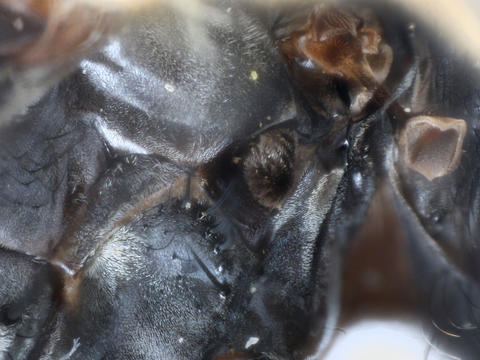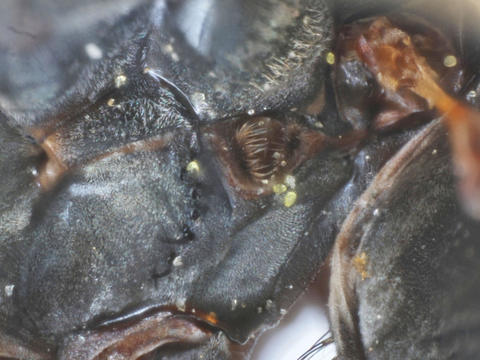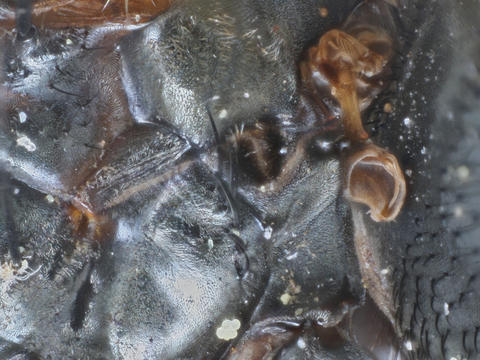Some species are just trouble right from the start aren’t they? They are usually fairly common species that lack any particularly distinctive features or they are slightly variable. You run them though the key but aren’t all that happy with the result so you try again – and get to somewhere different. You frown, look slightly vexed, and then try again … but no matter how you try you are never really happy, so you put it to one side “for later”. For me this experience is summed up in Lypha dubia … dubia by name and dubious by nature! I once sent 5-6 of these common flies over to Peter Tschorsnig, after being completely baffled by them. When I got the identifications back it was a real “facepalm” moment of epic proportions so I set myself a task of making them easier to key … such a common fly shouldn’t be that difficult in the keys … should it?!
The breakthrough, as is often the way in so many problems, came quite by chance when I was working on a batch of neotropical flies. In the Americas there there is a very diverse tribe called the Polideini and in there I noticed two familiar genera – Lypha and Lydina – both fairly common flies that in Europe were included in a different tribe – it was like the Polideini didn’t exist here. But in Monty Wood’s neotropical keys this tribe keys out very easily once you locate 2 features that are unused in the British keys by Belshaw – the metathoracic spiracle and the pteropleural bristle.
The metathoracic spiracle is the posterior-most (hind) spiracle on the thorax – the one that is shielded by the hypopleural bristles and which is located just under the haltere. Here is a photo of a typical spiracle (Exorista rustica) – the head is to the left and you can see the furry, single flap of the spiracle with the hypopleural bristles to the left and the haltere to the right:

Exorista rustica spiracle - showing the single flap
The next photos show polideine spiracles, which have small, equally-sized flaps – usually held open:

Lypha dubia spiracle - showing the 2 equally sized flaps

Lydina aenea spiracle - showing the equally sized flaps
The pteropleural bristle, as its name suggests, is just under the base of the wing and if it exists it is usually the largest bristle above the katepisternum – curving backwards. If you don’t see a huge bristle under the wing, above the katepisternum then your fly probably doesn’t have one.
[insert photos here of pteropleurals]
Now, all you have to check is:
- Is the pteropleural bristle really long – long enough to reach back to at least the middle of the biggest calypter?
- Is the metathoracic spiracle made up from 1 rounded flap or from 2 roughly equally-sized flaps (often held open or with a V-shaped gap at the top)?
If it has both of these features then your specimen is a polideine and sould be either Lypha or Lydina … easy!
